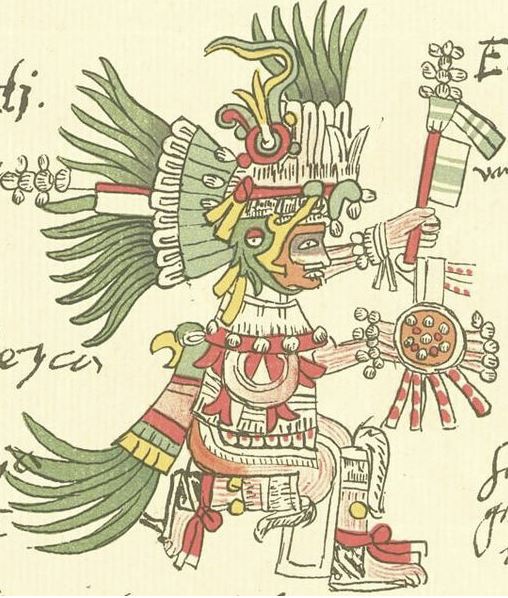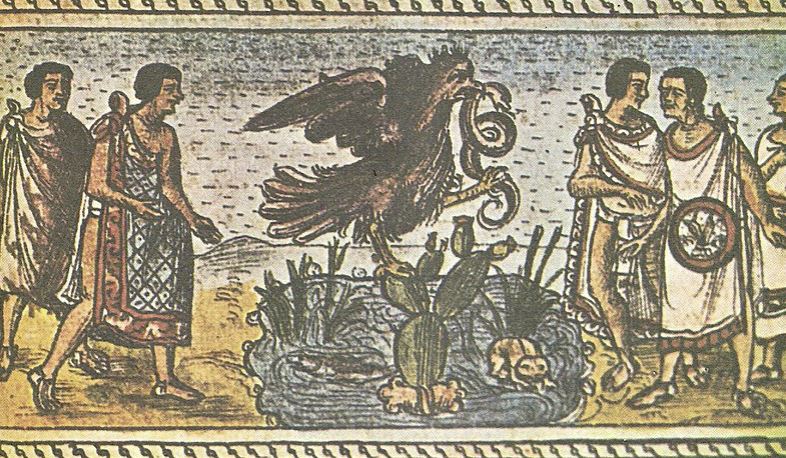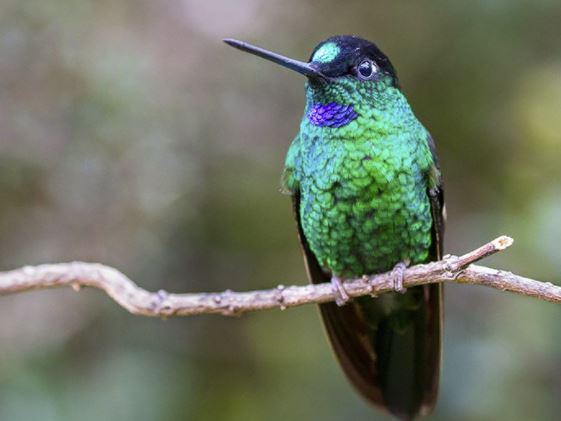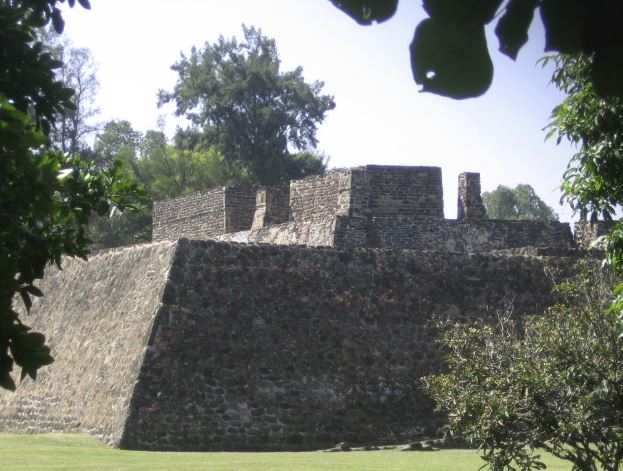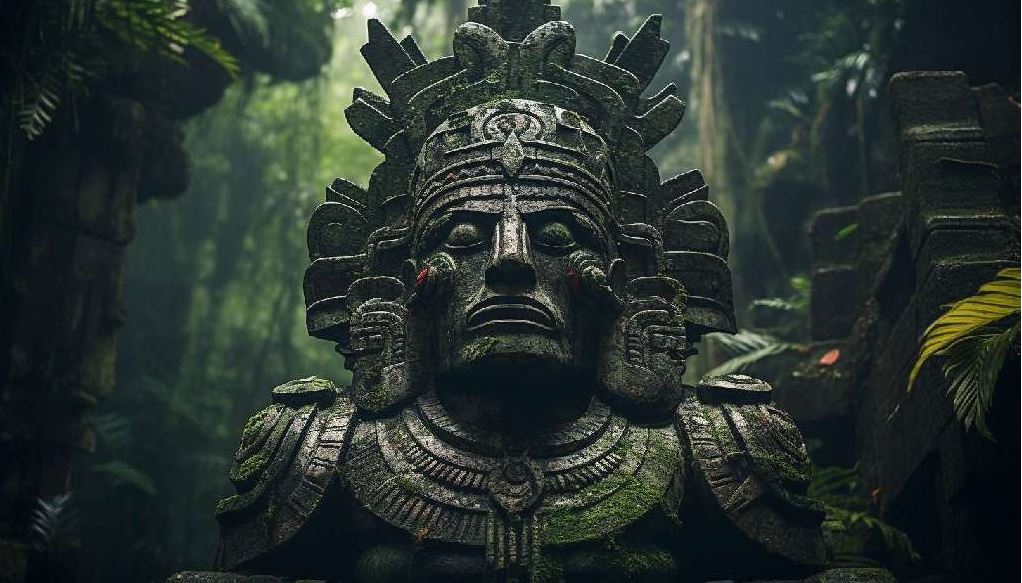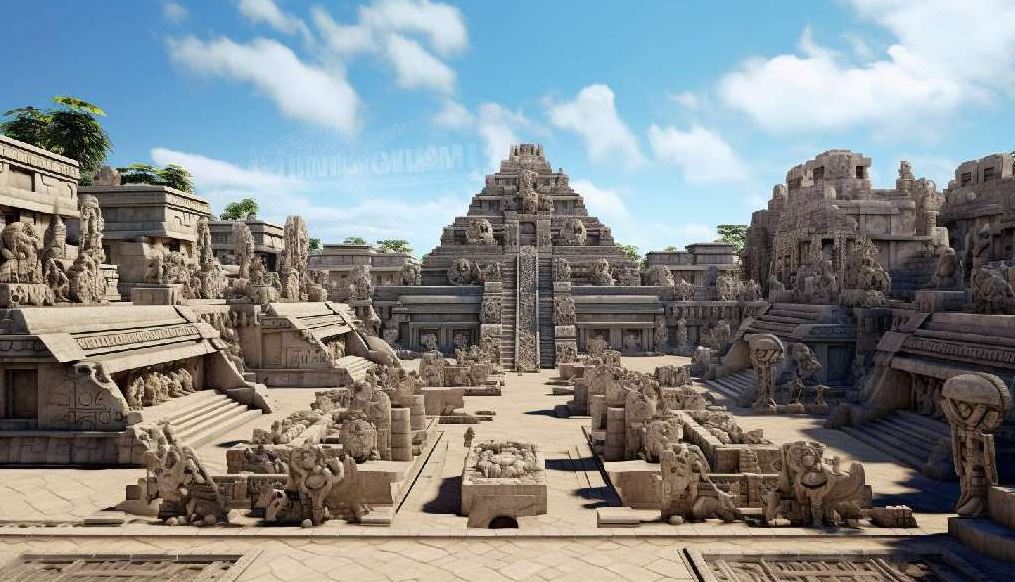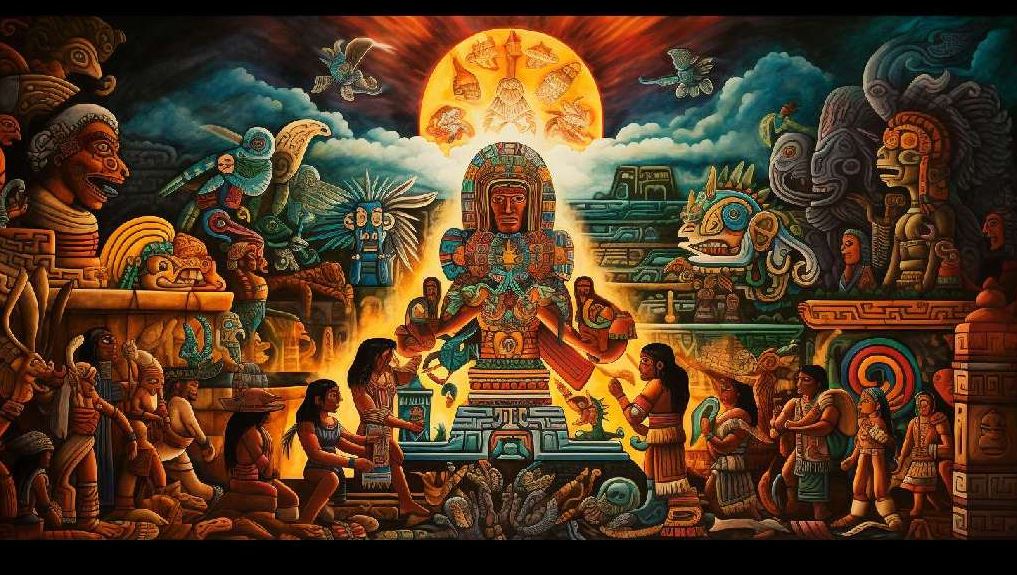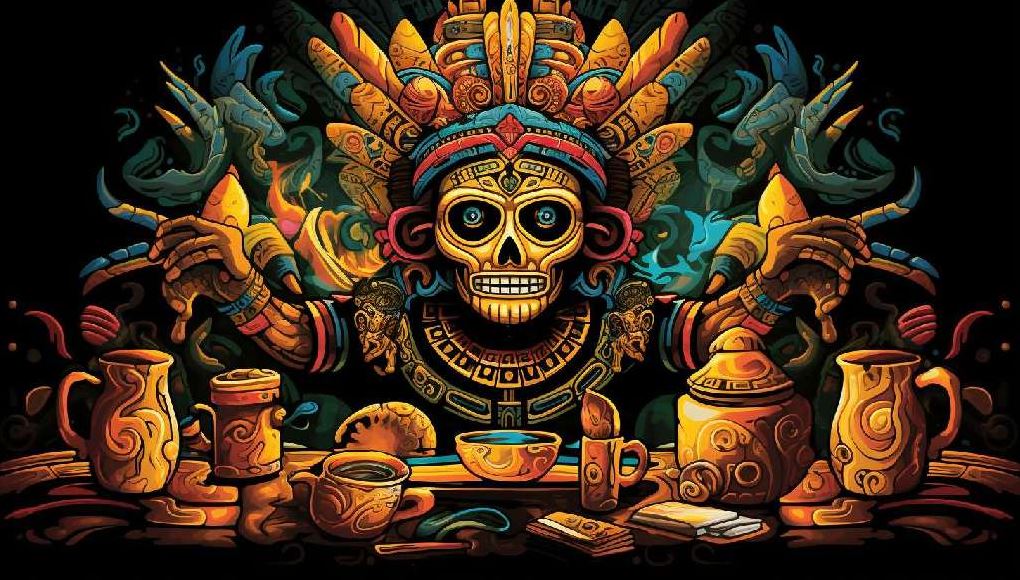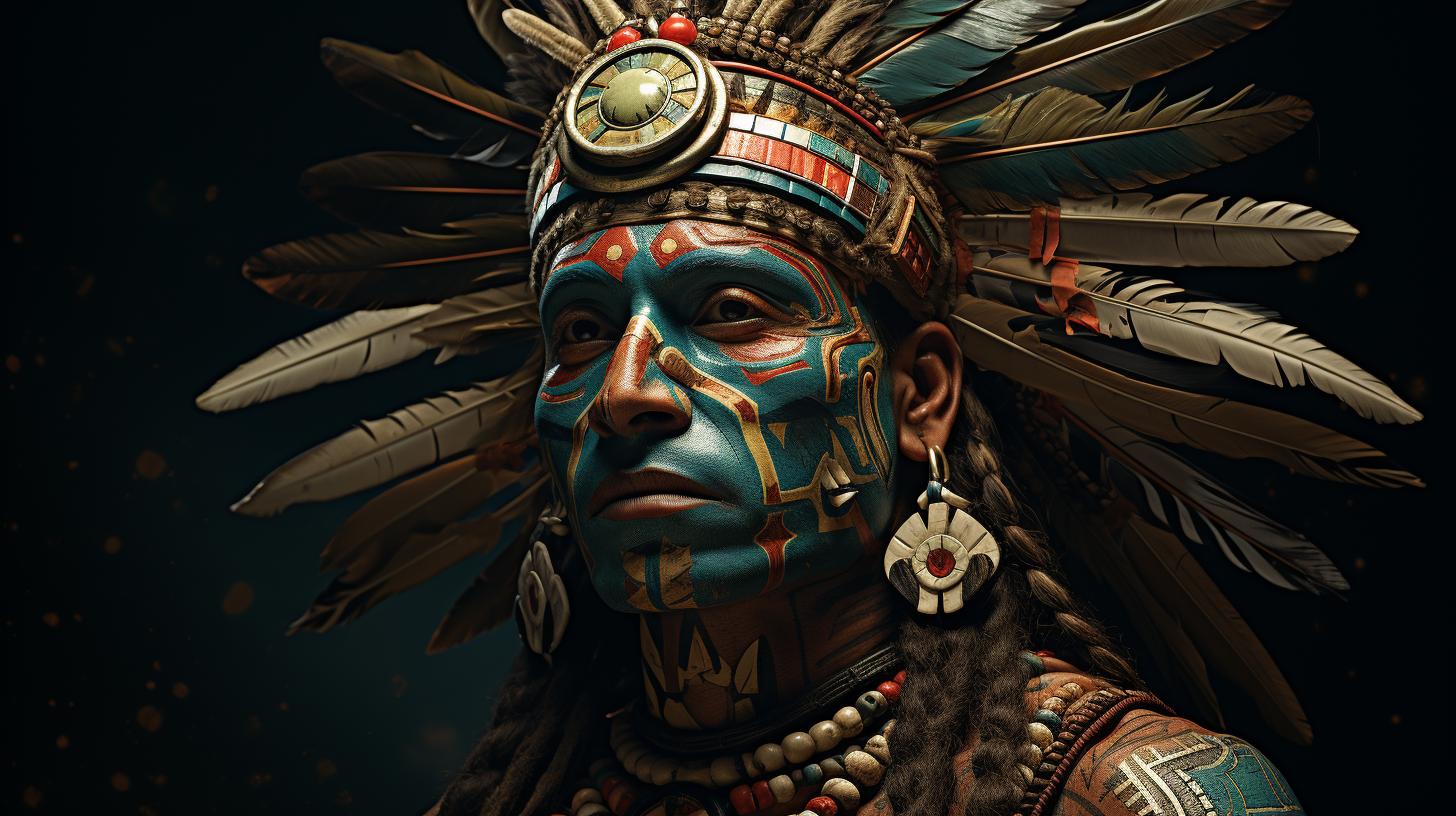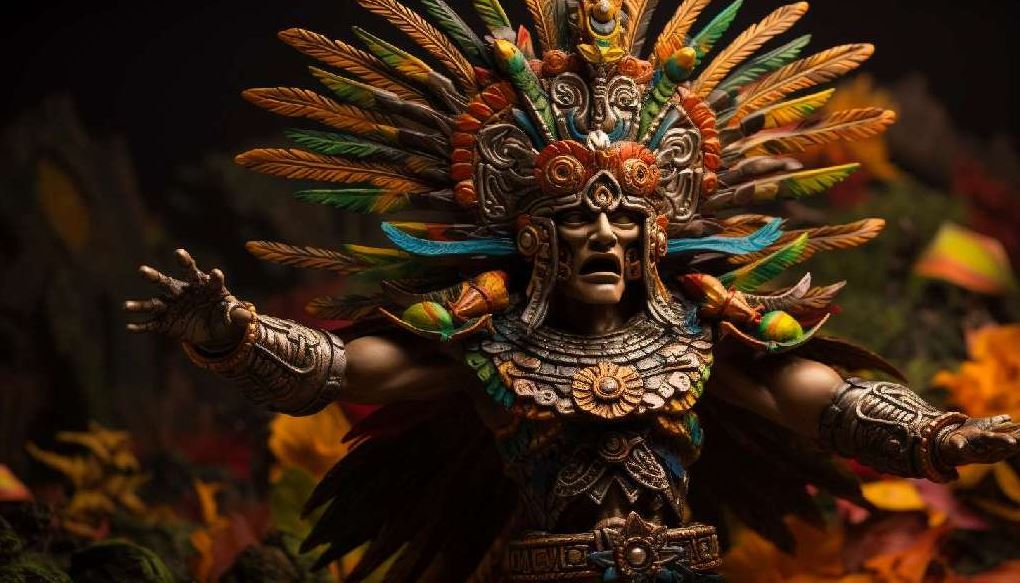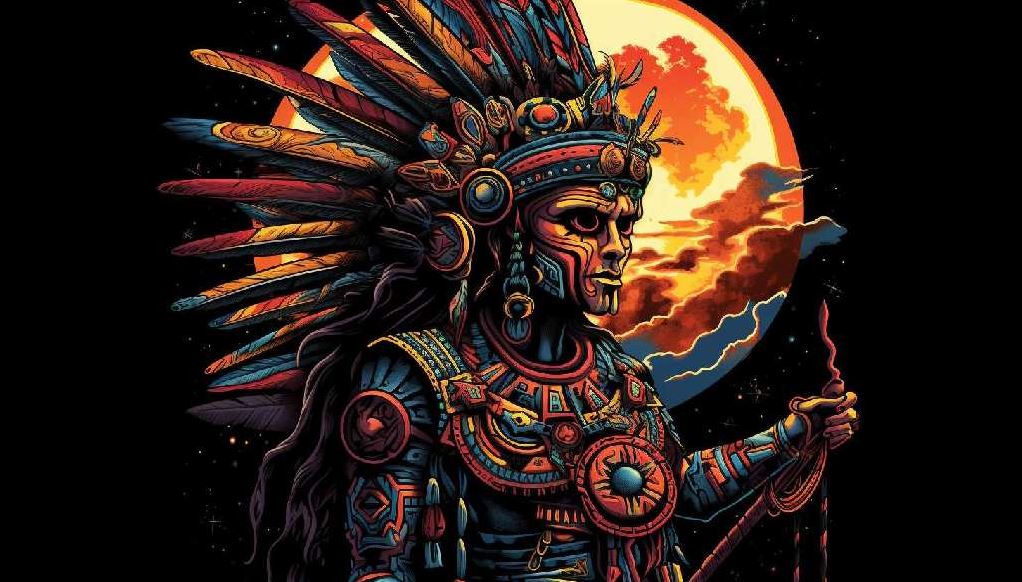The Aztec God of War Huitzilopochtli and Chief of the Aztec Pantheon
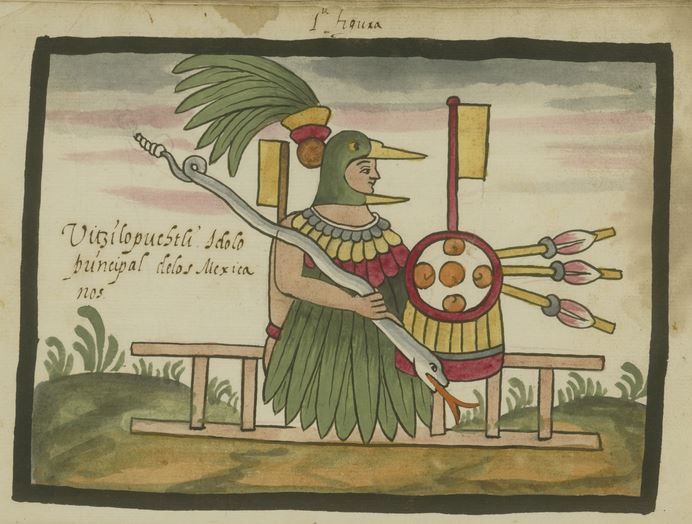
The Aztec god of war Huitzilopochtli was one of the main deities in the Aztec pantheon.
In fact, he was considered to be the patron of the capital of the Aztec Empire itself, the city of Tenochtitlan. He presided over the sun and over human sacrifices, which were a very important practice among the Aztecs, and was linked to war.
What was Huitzilopochtli the god of?
Huitzilopochtli was the god of warship and he was considered responsible for every victory and every defeat of the Aztecs on the battlefield, and, for this reason, he was accurately propitiated.
These people attributed to the Aztec god of war Huitzilopochtli an even more important task: in his role as the god of the sun, he would have granted the presence of this star in the sky, saving the Aztecs from the eternal night.
The Aztec sun god Huitzilopochtli’s iconography was varied.
Sometimes he was represented as a hummingbird; in other portraits, he had the features of a man, hummingbird feathers only being an ornament on his head and on his left leg.
He was often depicted holding a scepter having the form of a serpent at one end, and of a mirror at the other. In other representations he took with himself a real snake: it would have been Xiuhcoatl, the fire serpent.
A representation of the Aztec god of war Huitzilopochtli
Thanks to this association, the Aztec god of war Huitzilopochtli was related to fire, too, and was thought to be able to control this element.
What does Huitzilopochtli mean?: Huitzilopochtli meaning and Origin of the Name
The name “Huitzilopochtli” came from the Nahuatl words “huitzilin” and “opochtli”, which meant “hummingbird” and “left” respectively.
It must be noted that the South was thought to be the left side of the world by the Aztecs. Huitzilopochtli’s name could therefore mean “southern hummingbird”, but some scholars argue that this translation is too simplistic.
The Aztecs believed that dead warriors reincarnated into hummingbirds. Therefore, the Aztec god Huitzilopochtli’s name, refers to his association with war, besides with the cardinal point South.
Aztec god Huitzilopochtli art
Other names of the Aztec god Huitzilopochtli were Xiuhpilli and Totec. The first meant “turquoise prince”, and was then a reference to Huitzilopochtli’s relation with the turquoise serpent of fire.
Xiuhcoatl; the second signified “our lord” and, therefore, celebrated Huitzilopochtli as one of the most important deities.
History of the Aztec god of war Huitzilopochtli and Most Important Myths Related to Him
The Aztec god Huitzilopochtli is the main character of one of the most important myths of Aztec mythology, which actually, describes the birth of Huitzilopochtli.
This story had great importance for the Aztecs since it gave an explanation of the order of the Universe, and justified human sacrifices as necessary to maintain it. Let’s see this myth in detail.
The Aztec god of war Huitzilopochtli and the foundation of Mexico city
One of the most important Huitzilopochtli stories: The Birth of Huitzilopochtli
According to the most elaborate and famous version of the myth, the Aztec god of war Huitzilopochtli would have been the son of the goddess Coatlicue.
Before Huitzilopochtli, Coatlicue had already given birth to a great number of sons: the 400 male gods forming the group known as Centzon Huitznauhtin, and the female goddess Coyolxauhqui.
One day, while she was sweeping, Coatlicue would have been impregnated by a feather ball from the sky. When the pregnancy became evident, Coatlicue’s sons and daughter felt dishonored and planned to kill their mother.
The Aztec sun god Huitzilopochtli would have therefore come out of his mother’s womb, adult and in armor, and would have protected her decapitating his sister and scattering his brothers in the firmament: Coyolxauhqui’s head would have become the moon, while the Centzon Huitznauhtin would have formed the 400 stars of the southern constellations.
The Aztec god of war Huitzilopochtli would have then become the god of the sun and reenacted every day and night his chasing of the moon and stars.
For the Aztecs, therefore, Huitzilopochtli was the god who had given to the world its present structure when he was born, and who preserved it assuring the end of each night.
The reason behind why did the Aztecs sacrifice prisoners of war to the god Huitzilopochtli
The Aztecs believed that Huitzilopochtli had to be kept strong enough in order to do this and that the only thing good for this purpose was human blood, which the Aztecs saw as an important and powerful substance: this is the basis justifying the practice of human sacrifices.
The Powers of the Aztec god Huitzilopochtli
As the Aztec god of war, Huitzilopochtli was considered to be the strongest among the gods.
The story of his birth, and of how he alone defeated hundreds of his valuable brothers, testifies to this. Besides, he would have been in charge of the fire, thanks to his relation to the fire snake Xiuhcoatl, that he could use as a weapon.
The relationship between Huitzilopochtli and Tlaloc
The Aztec god of war Huitzilopochtli was thought to be the counterpart of the watery god Tlaloc: according to sources and archeological evidence only Tlaloc, in fact, could compare to Huitzilopochtli in terms of power and worship.
Symbols of the Aztec god of war Huitzilopochtli and Their Meanings
As we said, the main symbol of Huitzilopochtli was the hummingbird, a bird related to the warriors who died in battle and to the women who died while giving birth to a child. Let’s see the reasons behind this association in greater detail.
The Aztec god Huitzilopochtli symbol: The Hummingbird
It is not completely clear what could be the meaning of the hummingbird among the Aztecs.
Anyway, it has been noted that hummingbirds tend to hibernate themselves in a tree during the winter, in a state of apparent death, but in spring they wake up again, coming back to life.
The main symbol of the Aztec god Huitzilopochtli
This fact has suggested to some scholars that the hummingbirds could be seen as symbols of regeneration and rebirth among the Aztec, and could therefore well represent the destiny of those who, thanks to a glorious death in battle or during childbirth, could come back to life, avoiding the destiny of destruction common to most humans.
Additional Aztec god Huitzilopochtli Facts
The festivity dedicated by the Aztecs to Huitzilopochtli was called Toxcatl, and it was celebrated in the fifteenth month of the Aztec calendar.
On this occasion, of course, human sacrifices were held, and people used to dance in front of Huitzilopochtli’s temple. In addition, a ground maize image of Huitzilopochtli was made, and then ceremoniously sacrificed with an arrow and given to the priests to be eaten.
The temple of Huitzilopochtli Aztec god
The worshipping of Huitzilopochtli and Tlaloc
In Tenochtitlan, the Aztec capital, Huitzilopochtli was worshipped, together with Tlaloc, in the Templo Mayor, the most important building of the entire city. It had a pyramidal platform, on top of which twin temples were located, one on the northern side, dedicated to Tlaloc, and one to the South, in https://oldworldgods.com/aztecs/aztec-god-tlalochonor of Huitzilopochtli.

